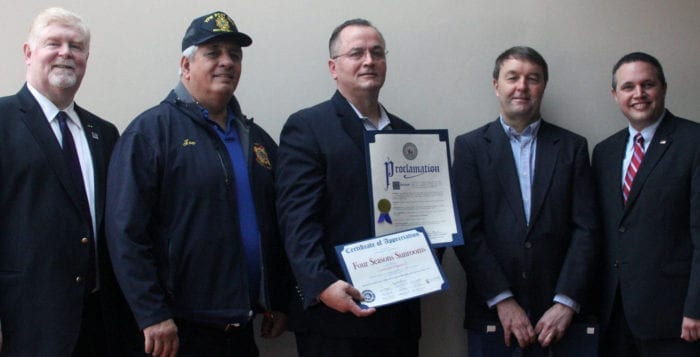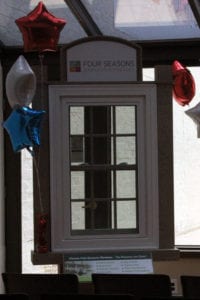It seems like I have more and more patients who suffer from irritable bowel syndrome (IBS). IBS can be a very frustrating disease for both the patient and the physician. IBS is very common, affecting about 20 percent of the population, according to the National Digestive Diseases Information Clearinghouse (NDDIC), a division of the National Institutes of Health. For inflammatory bowel disease patients, there’s an even higher prevalence, with 30 to 35 percent of this population affected (1).
The perception is that the symptoms are somewhat vague. They include cramping, abdominal pain, bloating, constipation and diarrhea, according to the NDDIC. Some patients have more of one type of bowel movement, diarrhea or constipation, than the other.
Physicians use the Rome III criteria, an international effort to create scientific data to help in the diagnosis and treatment of functional gastrointestinal disorders, plus a careful history and physical exam for diagnosis. However, there is not a specific medicine for this disease, though some have shown benefits.
I think what epitomizes IBS is the colonoscopy study, where IBS patients who underwent colonoscopy had diagnostic findings that were nil. This tended to frustrate patients even more, not reduce their worrying, as the study authors had hoped (2).
Rather, it plays into that idea that patients don’t have diagnostic signs, yet their morbidity (sickness) has a profound effect on their quality of life. Socially, it is difficult and embarrassing to admit having IBS. Plus, with a potential psychosomatic component, it leaves patients wondering if it’s “all in their heads.” IBS is also a considerable financial burden on the health care system (3). So, what can be done to improve IBS? There are a number of possibilities to consider.
The brain-gut connection
The “brain-gut” connection, which is also known as mindfulness-based stress reduction, was used in a study with IBS. Those in the mindfulness group (treatment group) showed statistically significant results right after training and three months posttherapy in decreased severity of symptoms compared to the control group.
Those in the treatment group were instructed to do meditation, gentle yoga and “body scanning” — focusing on one area of the body for muscle tension detection. The control group attended an IBS support group once a week. This was a small but randomized clinical trial, the gold standard of studies, which was eight weeks in duration (4).
Recently, a preliminary study suggested there may be an association between IBS, migraine and tension-type headaches. The study of 320 participants — 107 with migraine, 107 with IBS, 53 with episodic tension-type headaches (ETTH) and 53 healthy individuals — identified significant occurrence crossover among those with migraine, IBS and ETTH. Researchers also found that these three groups had gene mutations related to the neurotransmitter serotonin. Their hope is that this information will lead to more robust studies that could result in new treatment options (5). This may be another example of the importance of the brain-gut connection. In my practice, I have had patients who have complained of both abdominal pain and migraines together.
Gluten effect
In a small randomized clinical trial, patients who were given gluten were more likely to complain of uncontrolled symptoms than those who were given a placebo (68 percent vs. 40 percent, respectively). These results were highly statistically significant (6). The authors concluded that nonceliac gluten intolerance may exist. Gluten sensitivity may be an important factor in the pathogenesis of a portion of IBS patients (7). I suggest to my patients that they might want to start out by avoiding gluten and then add it back into their diets to see the results. Foods containing gluten include anything made with wheat, rye and barley.
What about fructose?
Some IBS patients may suffer from fructose intolerance. In a prospective (forward-looking) study, IBS patients were tested for this with a breath test. The results showed a dose-dependent response. When patients were given a 10 percent fructose solution, only 39 percent tested positive for fructose intolerance, but when they were given a 33 percent solution, 88 percent of patients tested positive. The symptoms of fructose intolerance included flatus, abdominal pain, bloating, belching and alternating bowel habits. The authors concluded that avoidance of fructose may reduce symptoms in IBS patients (8).
According to another study, about one-third of IBS patients are fructose intolerant. When on a fructose-restricted diet, symptoms appeared to improve (9). This is a small change in lifestyle compared to the large beneficial impact it may have on IBS symptoms. Foods with high levels of fructose include certain fruits, like apples and pears, but not bananas.
Does lactose play a role?
In another small study, about one-quarter of patients with IBS also turn out to have lactose intolerance. Two things are at play here. One, it is very difficult to differentiate the symptoms of lactose intolerance and IBS. The other is, if you couldn’t already surmise, most of the trials in IBS are small and there is a need for larger trials. Of the IBS patients that were also lactose intolerant, there was a marked improvement in symptomatology at both six weeks and five years when placed on a lactose-restrictive diet (10).
Though the trial is small, the results were statistically significant, which is impressive. Both the durability and the compliance were excellent. Visits to the outpatient clinics were reduced by 75 percent. When appropriate, a lactose-restrictive diet is cost effective and a time savings according to the authors. This demonstrates that it is most probably worthwhile to test patients for lactose intolerance who have IBS.
Medications may be relevant
There may be small intestine bacteria overgrowth in IBS patients. In a trial using an upper gastrointestinal scope, 37.4 percent of IBS patients had small intestinal bacterial overgrowth (SIBO) (11). Interestingly, SIBO was found in 60 percent of IBS patients with predominantly diarrhea symptoms compared to only 27.3 percent without diarrhea symptoms. This was a statistically significant difference. The organisms found most commonly in SIBO were E. coli, Enterococcus and Klebsiella pneumoniae. The authors suggest that this study reinforces clinical trials demonstrating a therapeutic role of nonabsorbable antibiotics in the treatment of IBS patients with small intestinal overgrowth.
What about probiotics?
Treatment with probiotics from a study that reviewed 42 trials shows that there may be a benefit to probiotics, but the end points were different in each trial.
The good news is that most of the trials reached one of their end points (12). Unfortunately, there were variations in magnitude of effect and choice of outcome.
Probiotics do show promise, including the two most common strains, Lactobacilli and Bifidobacteria, which were covered in this review.
All of the above gives IBS patients a sense of hope that there are options for treatments that involve modest lifestyle changes and that may or may not include medications. I believe there needs to be a strong patient-doctor connection in order to choose the appropriate options that result in the greatest reduction in symptoms.
References:
(1) Curr Treat Options Gastroenterol. 2005;8:211-221. (2) Gastrointest Endosc. 2005 Dec;62(6):892-899. (3) Scand J Gastroenterol. 2006;41:892-902. (4) Am J Gastroenterol. 2011 Sept;106(9):1678-1688. (5) Am Acad Neurol. 2016, Abstract 3367. (6) Am J Gastroenterol. 2011 Mar;106(3):508-514. (7) Am J Gastroenterol. 2011 Mar;106(3):516-518. (8) Am J Gastroenterol. 2003 June;98(6):1348-1353. (9) J Clin Gastroenterol. 2008 Mar;42(3):233-238. (10) Eur J Gastroenterol Hepatol. 2001 Aug;13(8):941-944. (11) Dig Dis Sci. 2012 Jan 20. (12) Aliment Pharmacol Ther. 2012 Feb;35(4):403-413.
Dr. Dunaief is a speaker, author and local lifestyle medicine physician focusing on the integration of medicine, nutrition, fitness and stress management. For further information, visit www.medicalcompassmd.com or consult your personal physician.






















